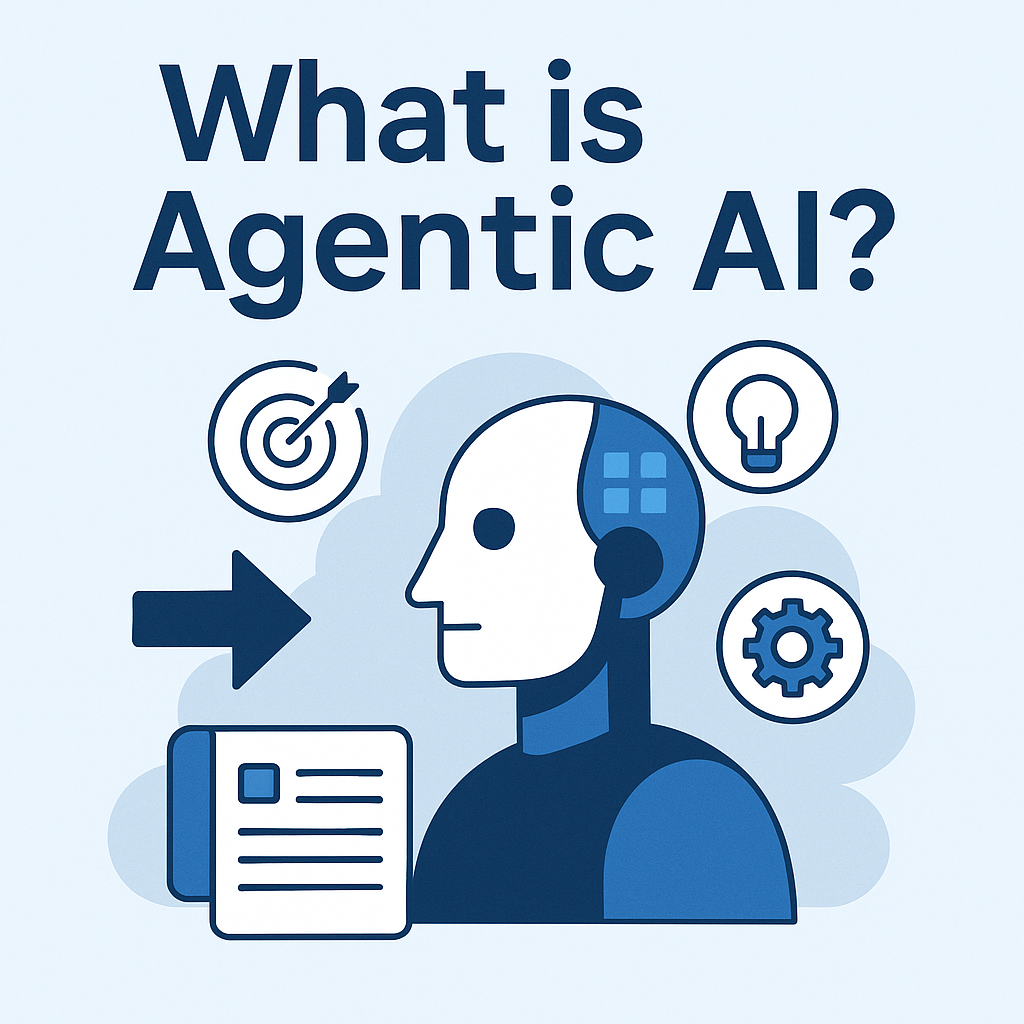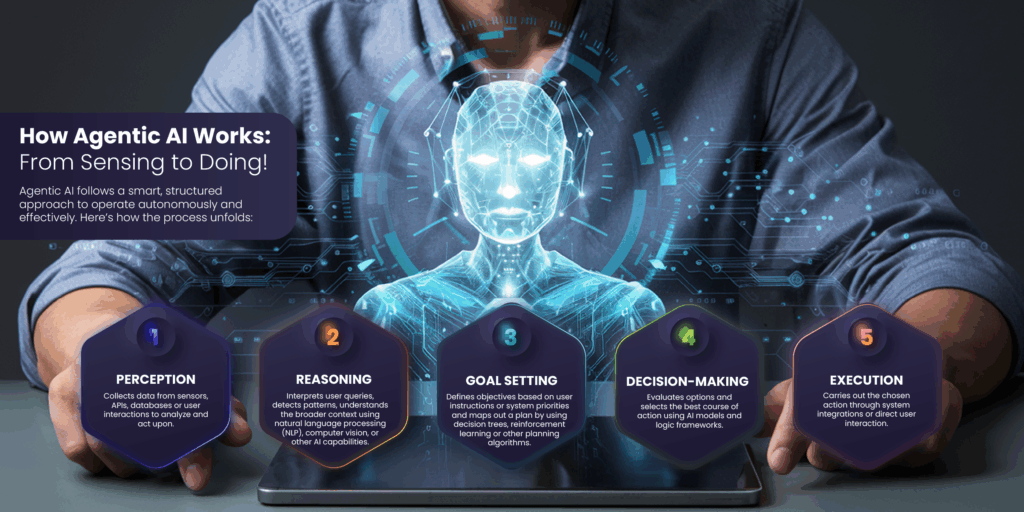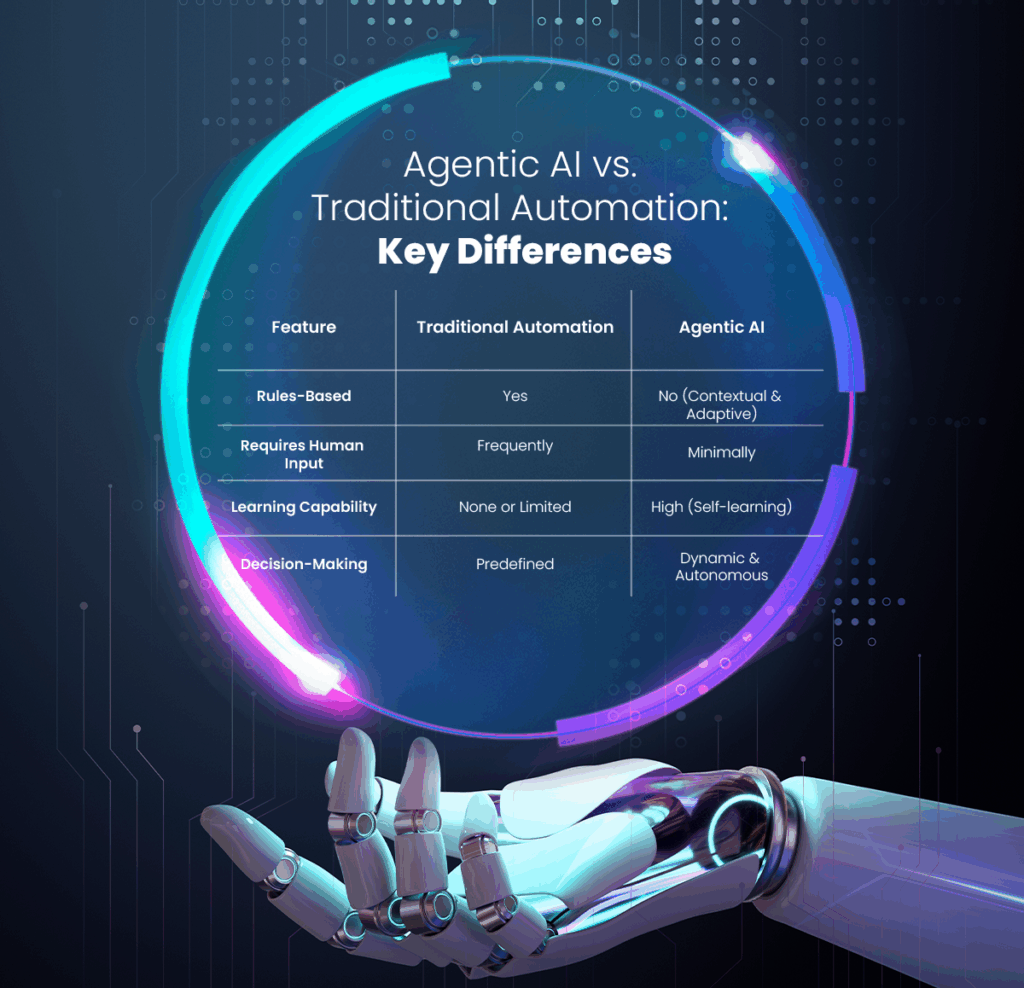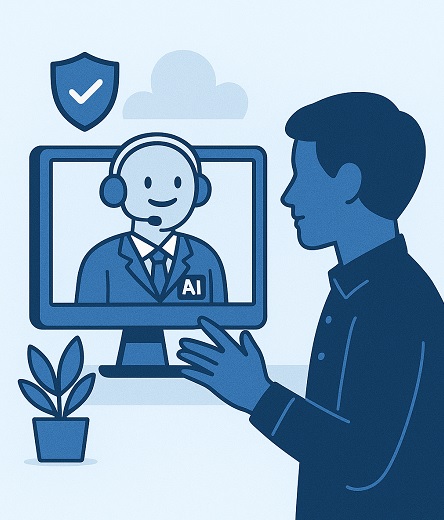Unlocking the next frontier of intelligent automation in the IT industry.
What is Agentic AI?
Agentic AI refers to artificial intelligence systems that are capable of acting autonomously, with self-directed goals, decision-making abilities, and learning capacities. Unlike traditional AI, which relies heavily on pre-programmed instructions or narrowly defined tasks, Agentic AI agents can perceive, reason, act, learn, and execute tasks with minimal human intervention ─ behaving more like collaborators than tools.

Agentic AI is the next evolution of AI that uses reasoning and iterative planning to solve complex problems autonomously. It performs multiple steps of an operation with correct perception, reasoning, learning, and planning to enhance productivity across industries.
For instance, in customer service, an AI agent can go far beyond just answering questions. Let’s say for a credit card process, an agentic AI can check the customer’s outstanding balance and recommend a solution, understanding the customer’s issue. It can also execute what the customer wants, if prompted, and solve the issue without or with minimal human intervention.
Agentic AI solutions draw from a wide range of internal and external data sources to autonomously interpret problems, craft solutions, and carry out actions. Organizations are leveraging this technology to tailor user experiences, simplify development processes, and support healthcare engagement.
Why It Matters for IT Industries Today?
The IT industry is under pressure to deliver faster results, reduce downtime, improve operational efficiency, and manage increasingly complex infrastructures. Agentic AI is a new breed of automation that doesn’t just follow instructions but adapts and evolves based on context. Whether it’s managing infrastructure incidents, optimizing cloud costs, or enhancing cybersecurity operations, Agentic AI is shaping a smarter, more proactive IT landscape.
How Agentic AI Works: From Sensing to Doing!
Agentic AI follows a smart, structured approach to operate autonomously and effectively. Here’s how the process unfolds:

Agentic AI for IT Operations
Agentic AI is revolutionizing how IT teams manage daily tasks and complex operations.
How Agentic AI Automates IT Processes
Unlike traditional RPA (Robotic Process Automation), which relies on scripted workflows, Agentic AI learns from patterns, past outcomes, and real-time data to automate tasks such as:
- Incident resolution
- Network diagnostics
- Infrastructure scaling
- Predictive maintenance
It can triage tickets, analyze logs, initiate recovery actions, and even interact with other systems ─ all without human intervention.
Agentic AI vs. Traditional Automation: Key Differences

Agentic AI in IT: How Self-Directed AI Agents Drive Efficiency and Shape the Future
As digital transformation accelerates, Agentic AI is emerging as a powerful force in IT operations, offering a new model of efficiency, automation, and intelligence. Unlike traditional automation tools, Agentic AI systems behave like digital employees sensing problems, analysing data, making decisions, and learning from the outcomes. This shift is not just incremental; it’s transformational.
Driving IT Efficiency with Self-Directed AI Agents
Agentic AI agents function with a level of independence and intelligence that sets them apart. These systems constantly monitor environments for issues, drawing data from various sources to understand the root causes of problems. Once they identify a challenge, they don’t wait for human input ─ they formulate a solution and execute it. Over time, they refine their approaches, learning from the outcomes of their actions to become even more effective.
This leads to several tangible benefits for IT teams. Mean Time to Resolution (MTTR) is significantly reduced, fewer incidents are escalated to human support, and the overall workload on IT professionals drops dramatically. These efficiencies not only save costs but also free up teams to focus on innovation rather than firefighting.
Tackling the Challenges of Adoption
Despite its promise, adopting Agentic AI in IT isn’t without hurdles. Integration with legacy systems can be complex, especially when older architectures weren’t built to accommodate autonomous AI agents. There’s also the issue of trust ─ many organizations are still grappling with how to explain and verify AI-driven decisions, particularly in sensitive or regulated environments.
Change management is another critical factor. As AI systems take over routine tasks, employees must be upskilled to collaborate with these agents and oversee their performance. Additionally, concerns around data privacy and compliance need to be addressed, especially when AI interacts with personal or proprietary information.
Fortunately, organizations can navigate these challenges by starting small launching pilot programs to test outcomes, opting for AI models with transparent logic, and gradually expanding usage as comfort and understanding grow.
Agentic AI in Action: Success Stories from the Field
Several forward-thinking companies have already seen impressive results from implementing Agentic AI. One organization managed to reduce its ticket resolution time by a striking 60%, simply by deploying autonomous AI agents to handle common IT requests. Another used AI to proactively detect and prevent server crashes, achieving a 90% success rate in avoiding outages. Yet another saved over $1.2 million annually by automating its helpdesk interactions — a testament to the scale of savings AI can deliver when applied strategically.
Disrupting the Future of IT Management
We’ll also see deeper collaboration between human teams and AI agents, particularly in DevOps and SecOps environments where speed and precision are paramount. Manual ticketing systems will gradually phase out as AI takes over routine workflows, and real-time optimization will help IT infrastructures run more efficiently than ever.

Preparing for the Agentic AI Revolution
Looking ahead, the impact of Agentic AI on IT management will be even more disruptive. One of the most significant shifts will be the advent of 24/7 autonomous monitoring and action. These AI agents don’t sleep — they work round the clock, identifying issues and resolving them in real time. Predictive and pre-emptive maintenance will become the norm, not the exception.
To stay ahead of the curve, IT leaders must begin preparing their teams today. Upskilling employees in AI literacy and prompt engineering is essential. Organizations should also reimagine workflows to encourage human-AI collaboration and set up robust governance structures to monitor AI activities. Defining clear KPIs to measure the impact of these agents will help track ROI and guide future expansion.
The Road Ahead
The future of IT is undeniably AI-driven but not just any AI. Agentic AI is pushing the boundaries from simple automation to dynamic, goal-directed operations. We’re on the cusp of a world where digital agents don’t just support IT teams; they become integral members of them.
In the near future, expect to see AI agents working across departments ─ from IT to HR and finance. Each role in the IT ecosystem may soon have its own AI co-pilot, capable of assisting with tasks, offering insights, and making real-time decisions. And with the rise of agent marketplaces, businesses will soon be able to deploy modular, plug-and-play AI agents tailored to specific needs.
The revolution has already begun. The only question is are you ready to lead it?